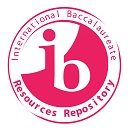2017 Paper 1 (HL) - Wealth and Happiness

This Higher Level Paper 1 exemplar, from May 2017, is the first in a series of three posts. The comparative commentary is based on Text C and Text D from that exam year. While InThinking cannot publish the actual exam paper (you'll have to ask your IB Coordinator for them or you will need to purchase them), you can find rough versions of the texts online. The first, from the Japan Times, is an editorial about happiness in relation to wealth. The second text is a piece of nonfiction from Jack London's observations about the city of London in 1903. It comes from Chapter 5, "Those on the Edge," and ends with "the bottom of the Abyss."
There are many ways to be successful on a Paper 1 and students will need to think carefully about the variety of approaches to this assessment. Using this exemplar, along with the bank of others published on the site, will allow students to see - cliche as it may sound - "that other people, with their difference, can also be right" (IB Mission Statement). In other words, there are many right ways to write a Paper 1 and the sheer variety you will find on the site is a testament to that idea.
Sample Student Response
![]() 2017 Paper 1 HL Wealth and Happiness Exemplar 1
2017 Paper 1 HL Wealth and Happiness Exemplar 1
May 2017 – Paper 1 – Text C and D
The illusory correlation of happiness and wealth is one that often times confuses populations into prioritizing materialistic gain over being content. Text C, an editorial from the Japan Times written in 2013 attempts to persuade readers that their focus should be happiness before affluence. As the editorial speaks to Japanese readers directly, the argument to pursue happiness is focused that particular audience. Text D, an excerpt from Jack London’s published observation of London in the early 20th century, instead merely comments on the nature of happiness in relation to wealth. While both text explore the correlation, or lack thereof, between happiness and economic status, the purposes of each piece are very different.
In relation to the discussion of economic gain, the Japan Times editorial clearly defines economic success. The expression of high economic standing is displayed through various phrases. “High standard of living,” “Economic development,” and “Economic growth and material gains,” all fall under the same semantic field, in which they are synonyms expressing pure economic standing. Through this use of synonyms, the author clearly and consistently defines economic success, therefore enabling the audience to distinguish between that and happiness. Furthermore, distinguishing the two concepts with a purposeful clarity further separate the two for the audience, so that the author may place a higher value on the concept of happiness. The recent publishing of this editorial, as shown by the date on the top right hand corner connects to the clarity of economic wealth as it focuses on wealth in contemporary times, emphasizing the importance of this editorial to a contemporary audience. The importance of editorial’s content for the audience is further augmented as it was published in the Japan Times and focuses heartily on Japanese economic and social standing. Through defining economic success to an economically driven audience, the author prepares to undermine the value of wealth in order to persuade the audience to believe that happiness may be more important.
Jack London, on the other hand, describes his version of the lack of economic success to allow the reader to observe London from his point of view. The syntax of “chaos and misery” uses the end of the phrase to reflect the lifestyle of those he describes. As the phrase leads up to the word “misery,” connoting abject poverty, the focus of the phrase is that London is observing those of a low economic standing. Furthermore, the potential wealth in “fully belly and the evening pipe,” both being symbolic of comfort and not representative of poverty is quickly undermined by the phrase “is all they demand.” The diction of “all” scrutinizes the previous comfort as it reestablishes a “full belly” and “pipe” as meager and unsatisfying. By limiting even the smallest of material belongings to meek distractions from misery, London offers a depiction of those who live in true poverty, defining what it means to have no economic standing to the audience. This is necessary, as the audience’s understanding of the individuals lack of wealth emphasizes the importance of the happiness they feel. This definite poverty London’s characters live within aids in the readers viewing London as the author did when he was actually observing such people.
From clearly defining economic success, the editorial further distinguishes happiness and emphasizes its importance. By claiming that happiness is a “tendency of some cultures,” the author connects being content to one’s cultural background, a characteristic independent of economic success. The assumed happiness of Japanese citizens, and therefore the audience, is shown in the statistic “of 148 countries, Japan ranks…in the middle.” By using tangible evidence, the author creates ethos, establishing his or her position as correct, as it is in accordance with a “Gallup Poll,” a well-known and credible source. The mediocre happiness levels of Japan is reflected in the pathetic fallacy used by the author. As seen in the top left corner, the weather indicator shows clouds covering sun; clouds connote sadness here and a morose tone. The audience, those in Japan at the time of reading, will sense this sadness as it is reflected in the current weather they are experiencing. By establishing Japan as a country that lacks happiness, and defining happiness as independent of economic standing, the author illustrates to the audience the importance of deprioritizing economic success in order to become content.
London explores the concept of happiness as well, yet he comments on how it stems from ignorance, as he illustrates his observations of those living in London at the time. The words “happiness reigned” depicts a location not merely consisting of happiness but completely rules by it. He then states that it is a “dull, animal happiness,” symbolic of an ignorant happiness that is lacking human understanding and instead seems nullified by the inability to comprehend the wretchedness these people live in. The high modality in “there is no progress” asserts that this ignorant happiness is maintained, hinting at the inability to feel sad as one cannot grow “progress” in life. High modality allows London to share his experience with the audience with a clarity and soundness to the truth of his descriptions. His observations of happiness and its root comment on how the lack of wealth perpetuates ignorance, which perpetuates happiness, in essence claiming happiness cannot be gained through material wealth.
The persuasion of the editorial comes not from the assertive statements, but in allowing the audience to gather the evidence that will guide them to the desired conclusion. When using assertive statements, “happiness was only indirectly connected to material-centered lifestyles,” the author ensures that the evidence is taken from an authority: “the worldwide poll found.” This connection of seemingly factual phrases to an expert establishes the logos, as the audience trusts in the evidence being truthful, as logically, expert data normally is. However, when donning suggestions, the author employs low modality through a repetition of the word “should” in lines 5, 32, 41, 43, and 45. Employing low modality gives the reader the seeming ability to decide the importance of happiness and economic standing on their own. However, by even suggesting to prioritize happiness, the audience feels inclined to align their opinion with such suggestions, especially since no counter arguments are made throughout the entirety of the editorial. By allowing the audience to read the intended conclusion seemingly on their own, the audience will remain steadfast in their decision that happiness does not stem from economic wealth. On the other hand, the hyperlinks to other articles seen on the right side of the first page underlines the author’s credibility as the titles to similar editorials seem hyper-sensationalized (i.e. “Getting more women in to the Diet”). The capital of the word diet implies that is should be recognized as important; however, diets tend to have a connotation of being unnecessary and unhelpful, possibly reflecting the view of the author in the happiness editorial. While the hyperlinks, often a reflection of the kind of material being read on such a website, undermine the author’s credibility, the authoritative evidence and guiding persuasion shown by the author leave the audience convinced of the editorial’s arguments.
The lack of hyperlinks and other undermining characteristics of online pieces in London’s writing leaves little room for undermining his credibility. However, London’s purpose is not to persuade, but to convey personal observations on the connection between happiness and wealth. The mention of the “average workman” augments his credibility as London at the time was known for its masses of low to middle class workers. London’s connections to real life counter his metaphysical commentary while mentioning abstract concepts such as the “Abyss” and the “Unseen.” While these capitalized words, symbolic of metaphysical places, may create ambiguity and divert from the trueness of London’s observations, his writing reflects reality enough that is observations are assumed to be a true depiction. London’s purpose is to relay his experiences to the reader and the ample amount of detail that is reflective of London in 1903 allows readers to understand his experiences first-hand.
The detailed dichotomy of happiness and wealth in both works demands that one cannot be content while striving for economic success. The editorial incentivize readers to prioritize happiness while London’s asks of his audience to merely understand his point of view. Although each piece explores similar content, the purpose of both texts varies greatly, illustrating the effect of specific language in relation to the goals of the author.
Examiner's Comments
Criterion A - Understanding of the text - 5 marks
The analysis of the text should show an understanding of the text's purpose, its context (where this can be deduced) and a target audience. One's analysis of the text needs to be supported by relevant examples from the text.
5 out of 5: The candidate demonstrates excellent knowledge about both texts. Enough discussion of similarities and differences exist to score top marks here.
Criterion B - Understanding of the use and effects of stylistic features- 5 marks
The analysis of the text must show an awareness of how stylistic features, such as tone, style and structure, are used to construct meaning. A good analysis comments on effects of these features on its target audience.
4 out of 5: More analysis of the stylistic features is needed. There is detailed, but not yet perceptive understanding of the effects of various stylistic features.
Criterion C - Organization and development - 5 marks
The analysis must contain coherent arguments that are well-developed. The analysis must be organized effectively.
4 out of 5: While this is a well-organized comparative commentary, the lack of transitional words and phrases between new sets of paragraphs is problematic.
Criterion D - Language - 5 marks
The language of the analysis must be clear, varied and accurate. The register of the analysis must be appropriate, meaning it contains formal sentence structure, good choice of words and effective terminology.
5 out of 5: Even though this isn't perfect, the vocabulary, tone, and sentence structure are all quite strong, and it thus earns top marks.
 IB Docs (2) Team
IB Docs (2) Team